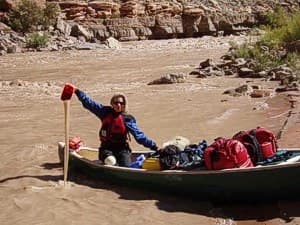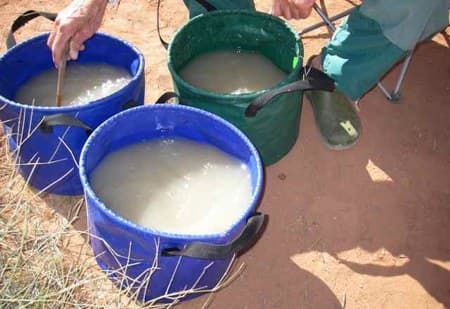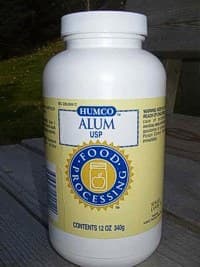How to Purify Silty Water
Eastern and midwestern waterways are generally clear and inviting. Not so in the far west and parts of some Arctic rivers. Desert rivers like the Colorado, Green and Missouri especially, are brown-colored and too silty to drink. Visibility is measured in centimeters. The water, which looks like chocolate malt, has a murky, raspy taste. You won't want to drink it even if it's technically potable. What to do?

If you try to filter out the silt, your filter will quickly clog. Some people tie a piece of nylon stocking (pantyhose) over the intake hose of their filter; others rely on a commercial pre-filter of some sort. But the silt is so fine, and there's so much of it, that nothing works very well for very long. For this reason, most people just buy water in plastic jugs and carry it in their canoe. But at 8.4 pounds per gallon, the weight adds up quickly.
A lighter solution is to use alum to settle the silt, then purify the clear water with chemicals or a filter, or my favorite, the SteriPen™. Alum is used in home pickling to add crispness, and as a settling agent in water treatment plants. It is non-toxic and tasteless. Most pharmacies have it. A twelve ounce (340 gram) bottle contains enough alum to settle about 24 gallons of silty water.
~Get the BWCAW Tee~
With over 1,090,000 acres of wilderness area, the BWCAW is a paddler's paradise.

PROCEDURE
- Fill your bucket with the silty water.
- Add about a tablespoon (the measurement isn't critical) of alum per gallon of water.
- Use a long stick to very slowly stir the water. Stir in ONE DIRECTION only. Continue stirring until a "flocculant precipitate" (it looks like snow) forms on the surface of the water - it takes about five minutes.
- When you see the snow-colored precipitate, STOP stirring. Allow the water to settle for about 20 minutes. At the end of this time the water will be clear and the silt will have settled to the bottom.
- Use a Sierra cup or ladle to gently dip the clear effluent from the top of the bucket. You can now boil, filter or chemically treat this water to make it potable.

I've used the this method to remove silt from river water on the Green River, Rio Grande and Little Missouri Rivers. It works great!
Cliff Jacobson is a professional canoe guide and outfitter for the Science Museum of Minnesota, a wilderness canoeing consultant, and the author of more than a dozen top-selling books on camping and canoeing. www.cliffcanoe.com
Related Articles
I've been busy lately rearranging my cooking essentials: the little tools that I can't do without. Of…
"All day I've faced a barren waste without the taste of water, cool water.Old Dan and I with throats…
Last August I offered a few tips on how to cook with fresh herbs while being away on a…
Growing up in a big multiethnic city I often shared meals with the family of one of my best friends,…


